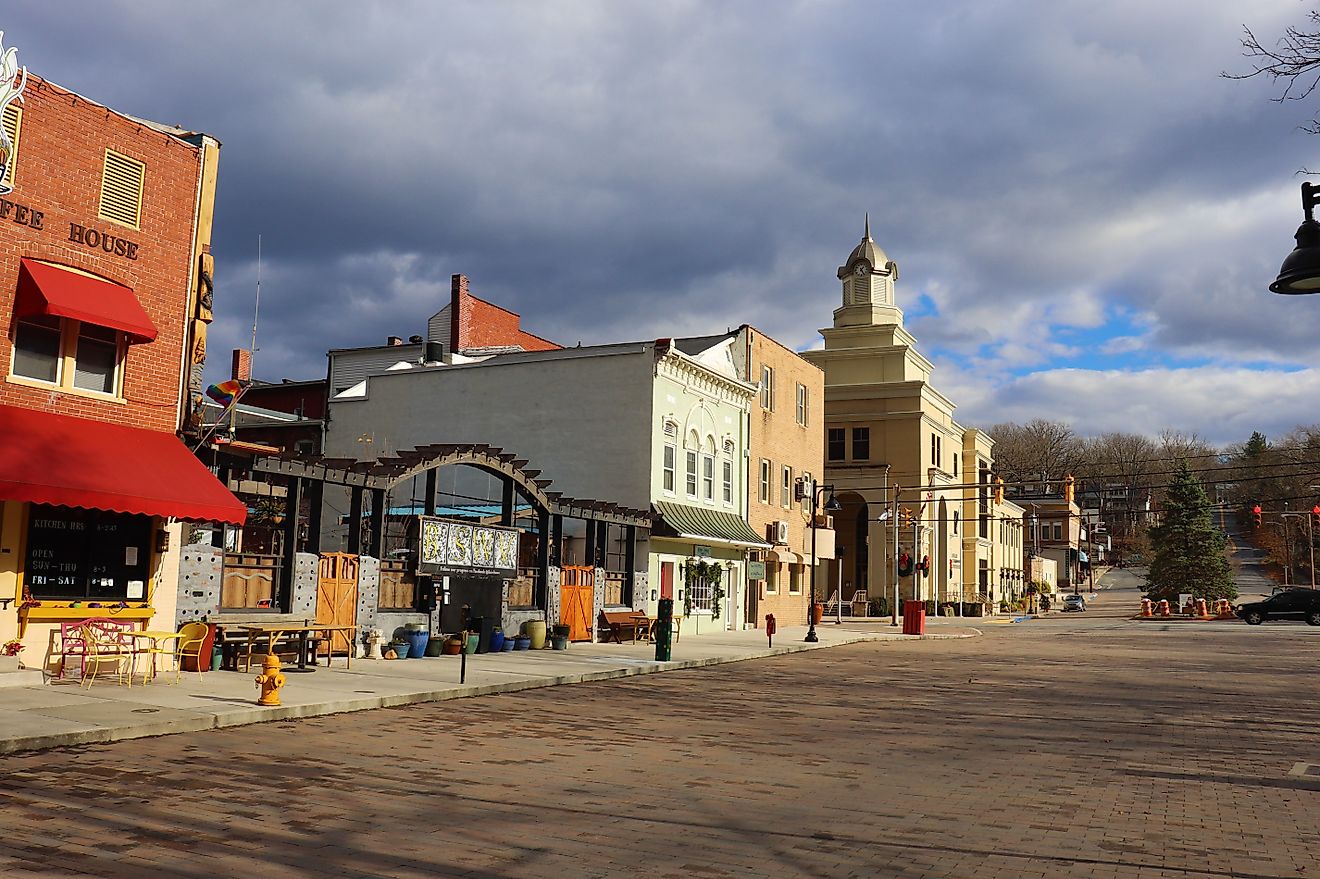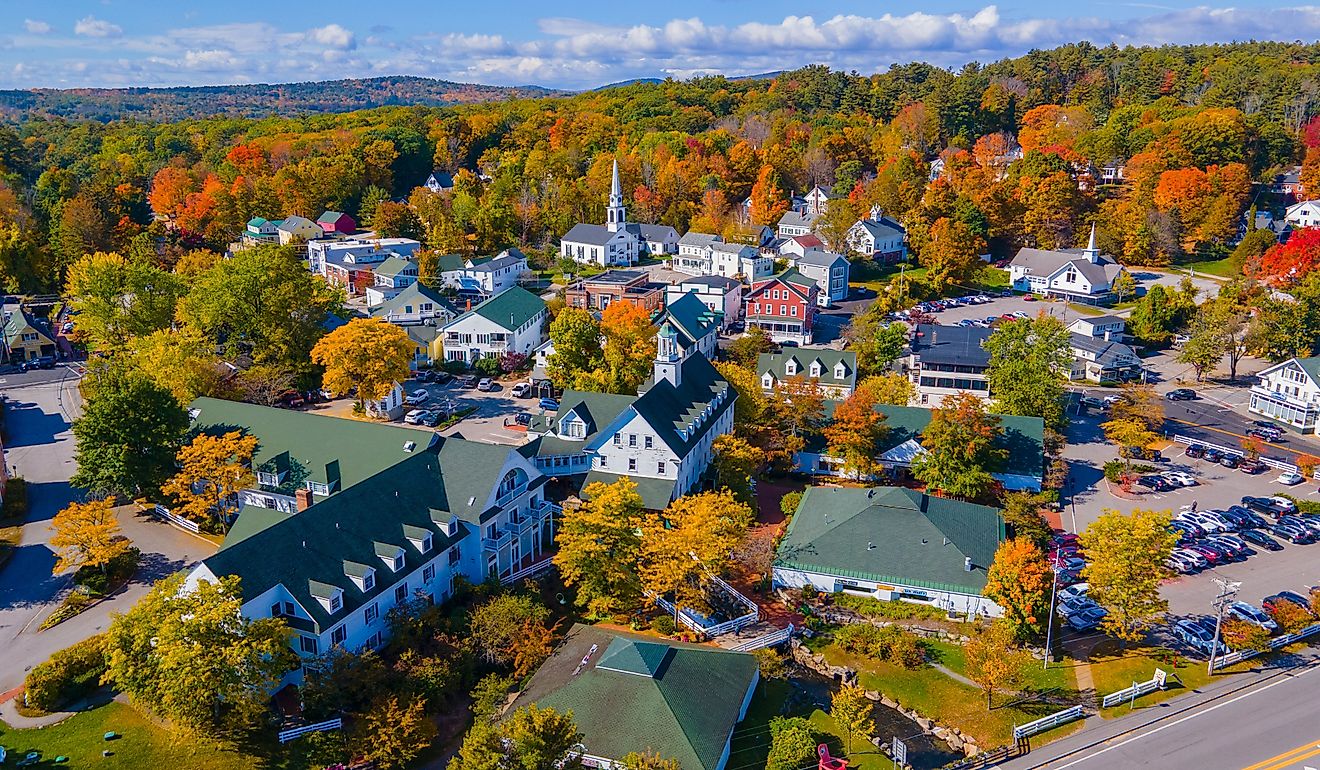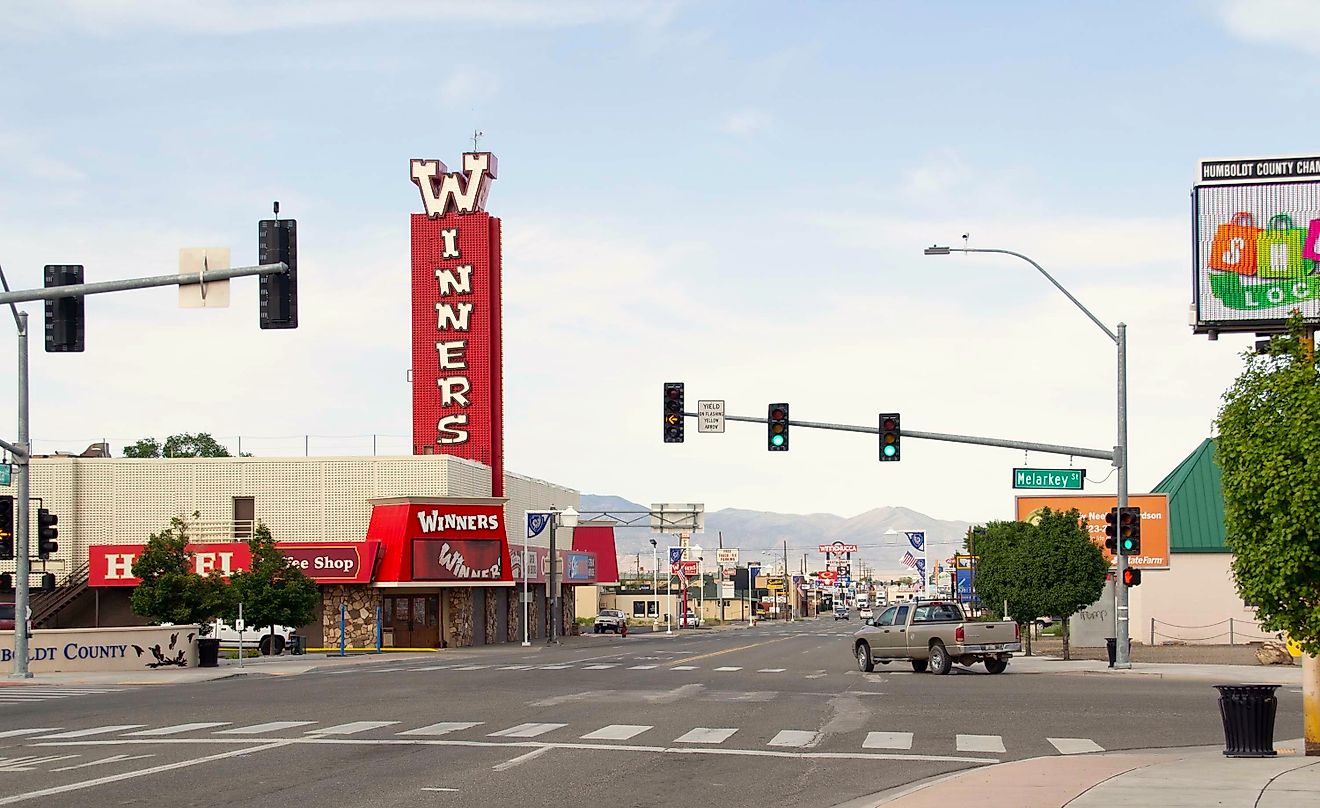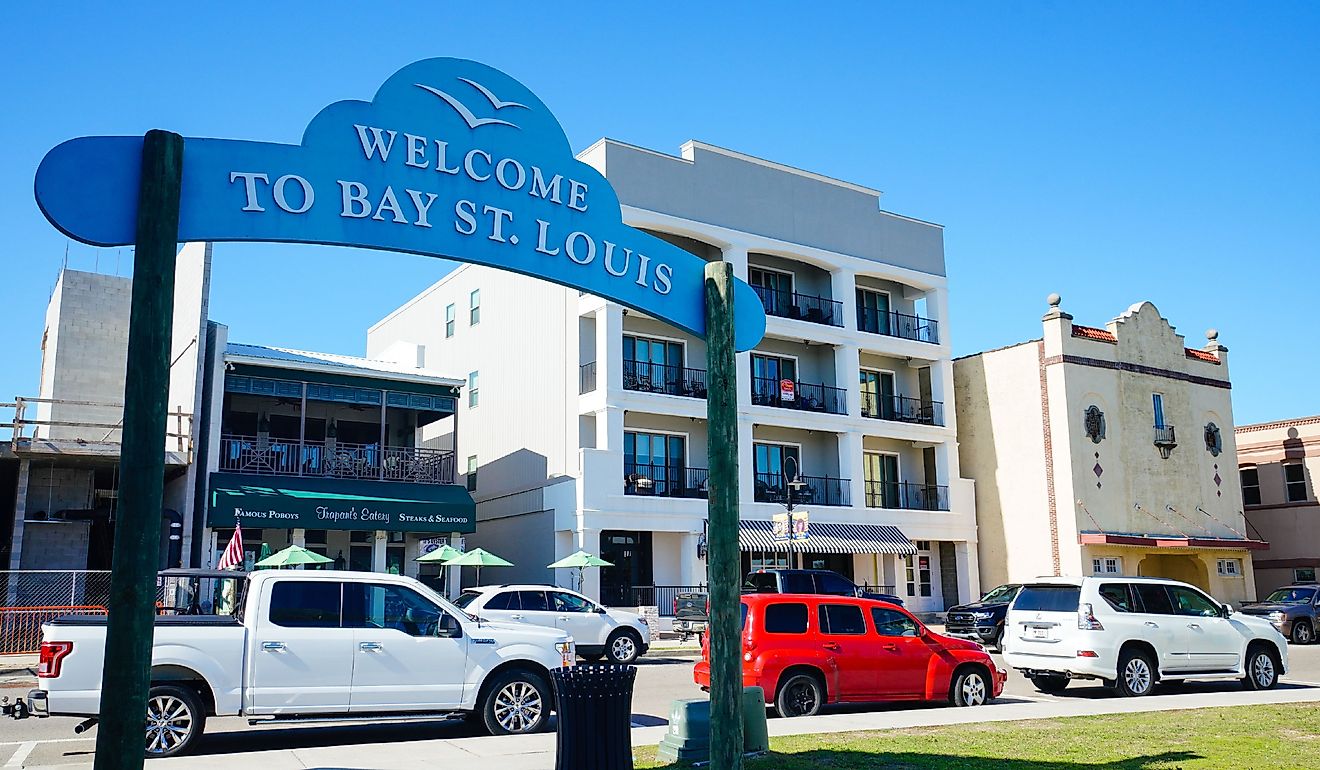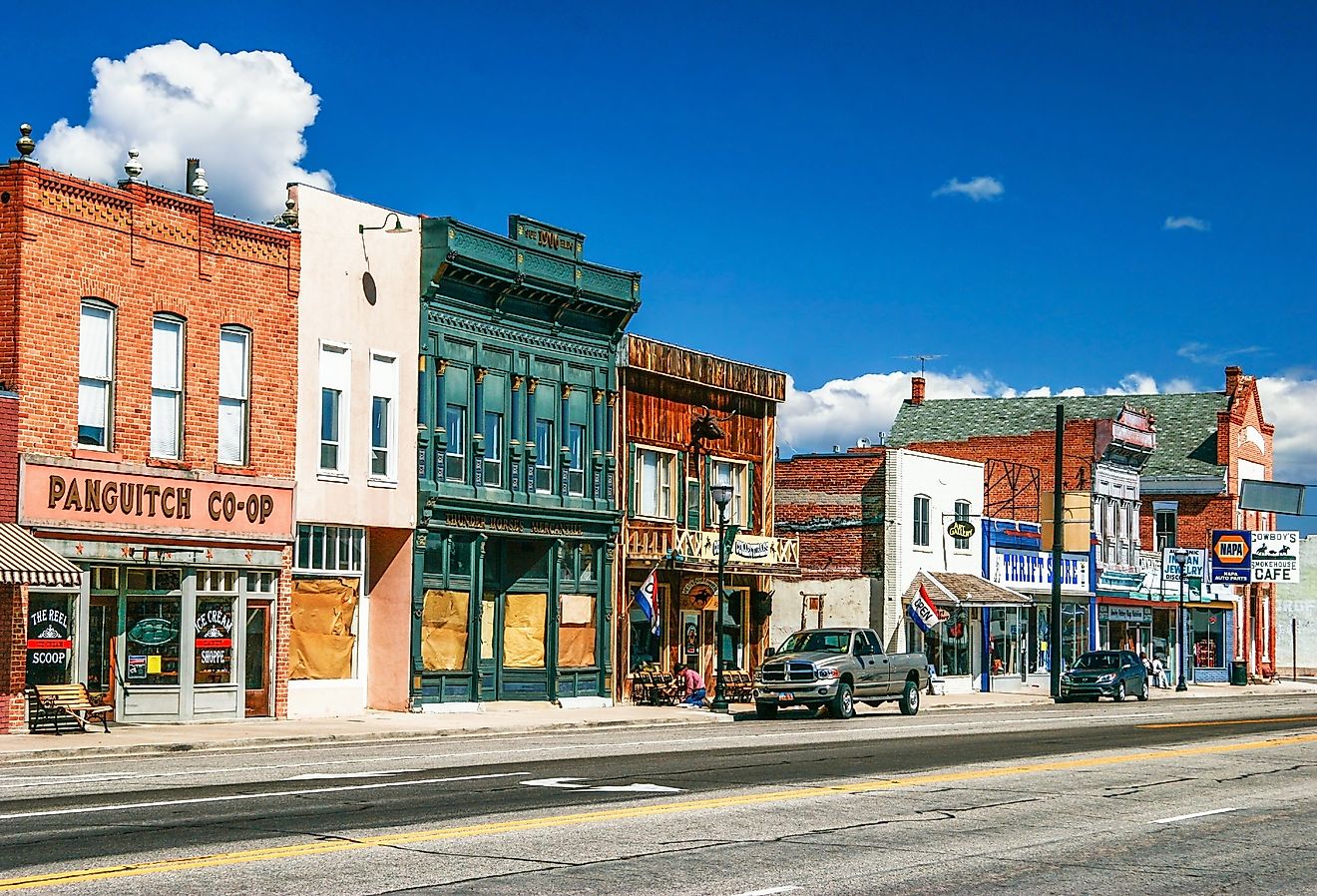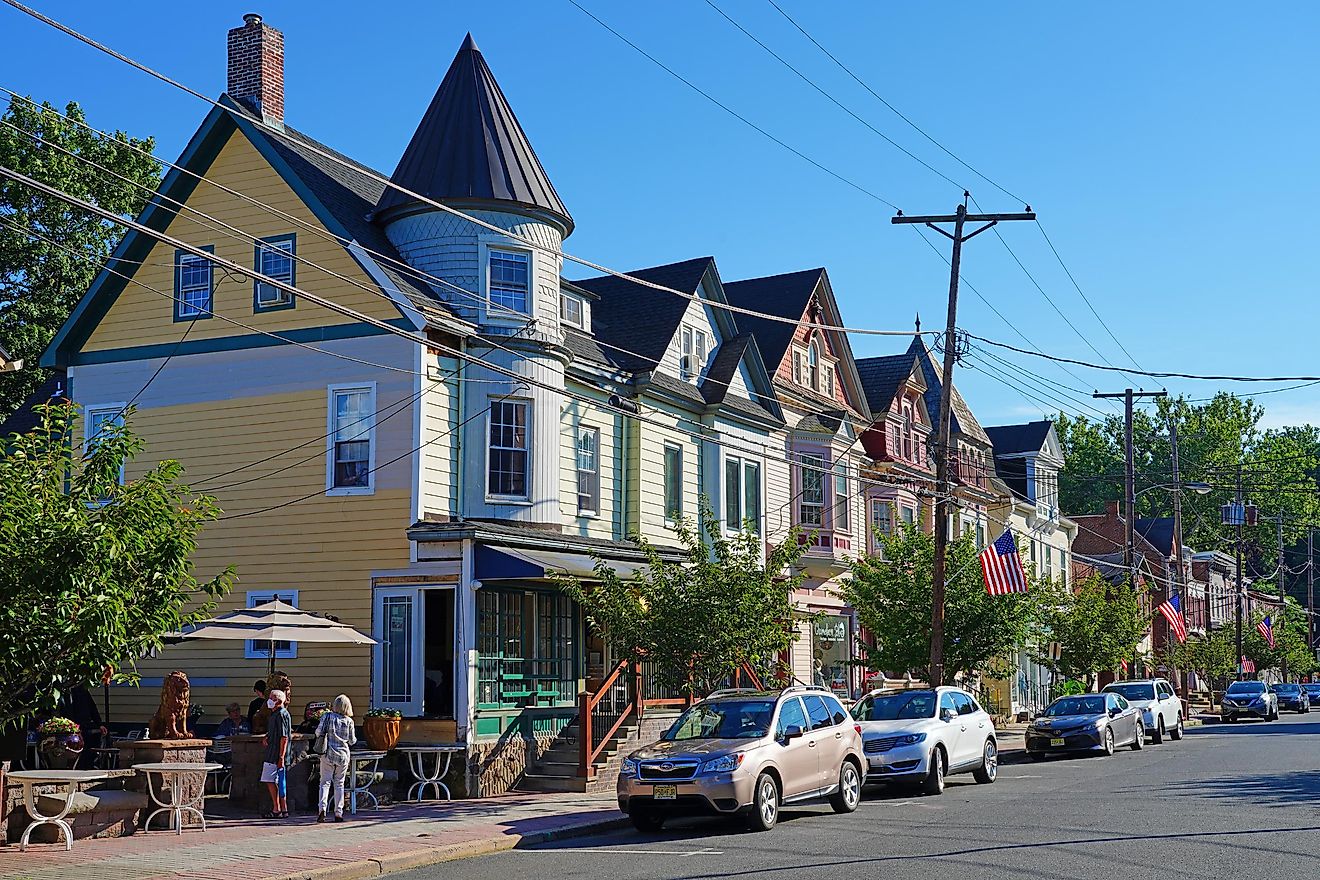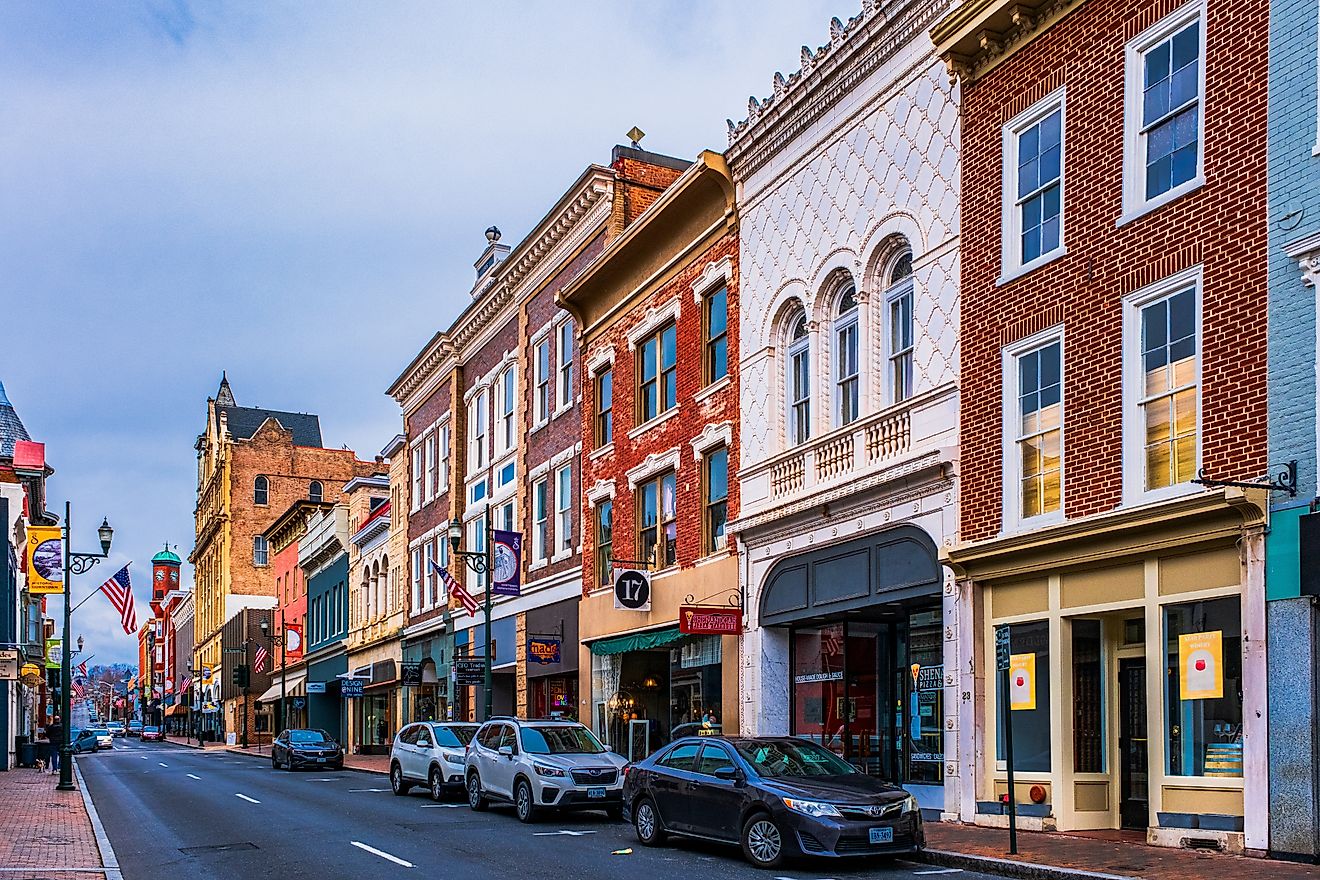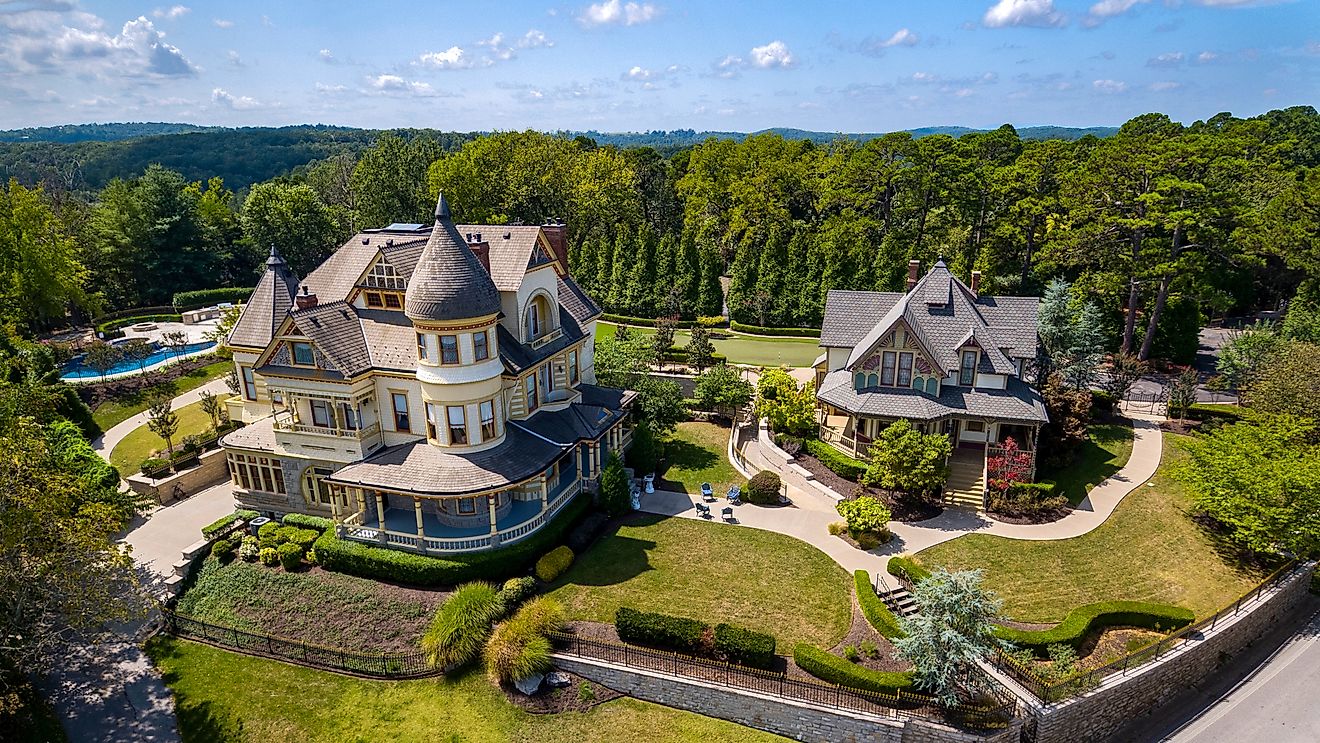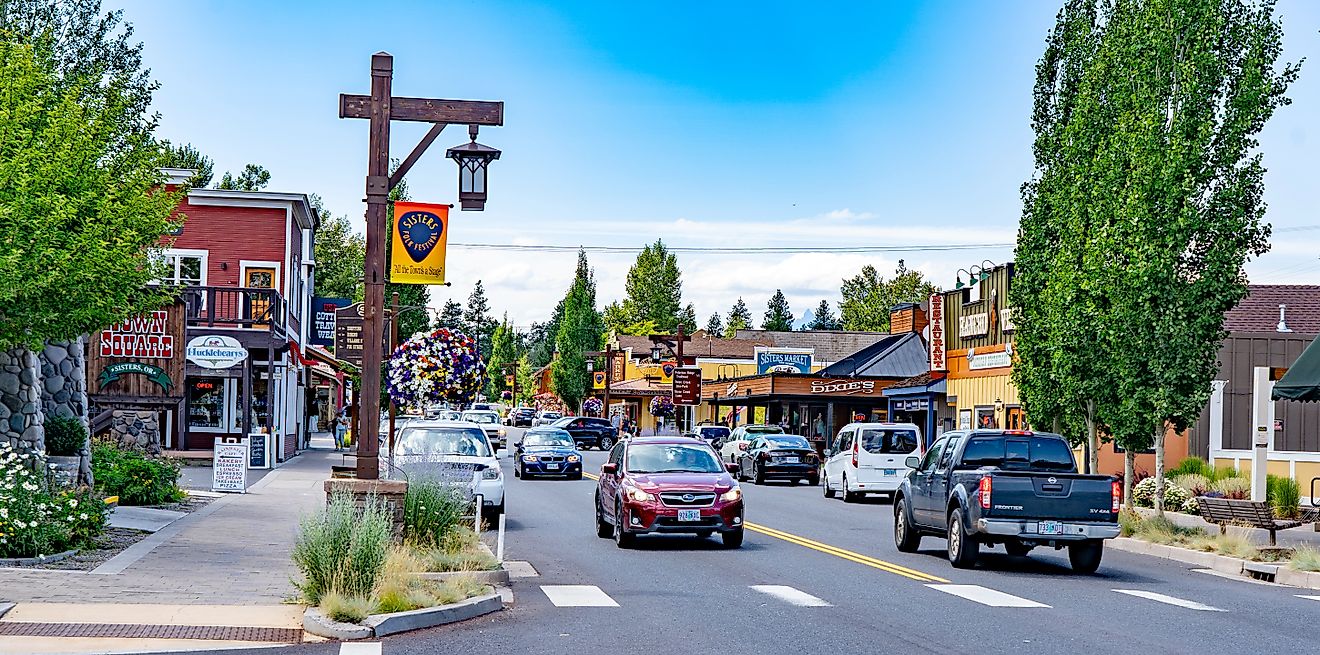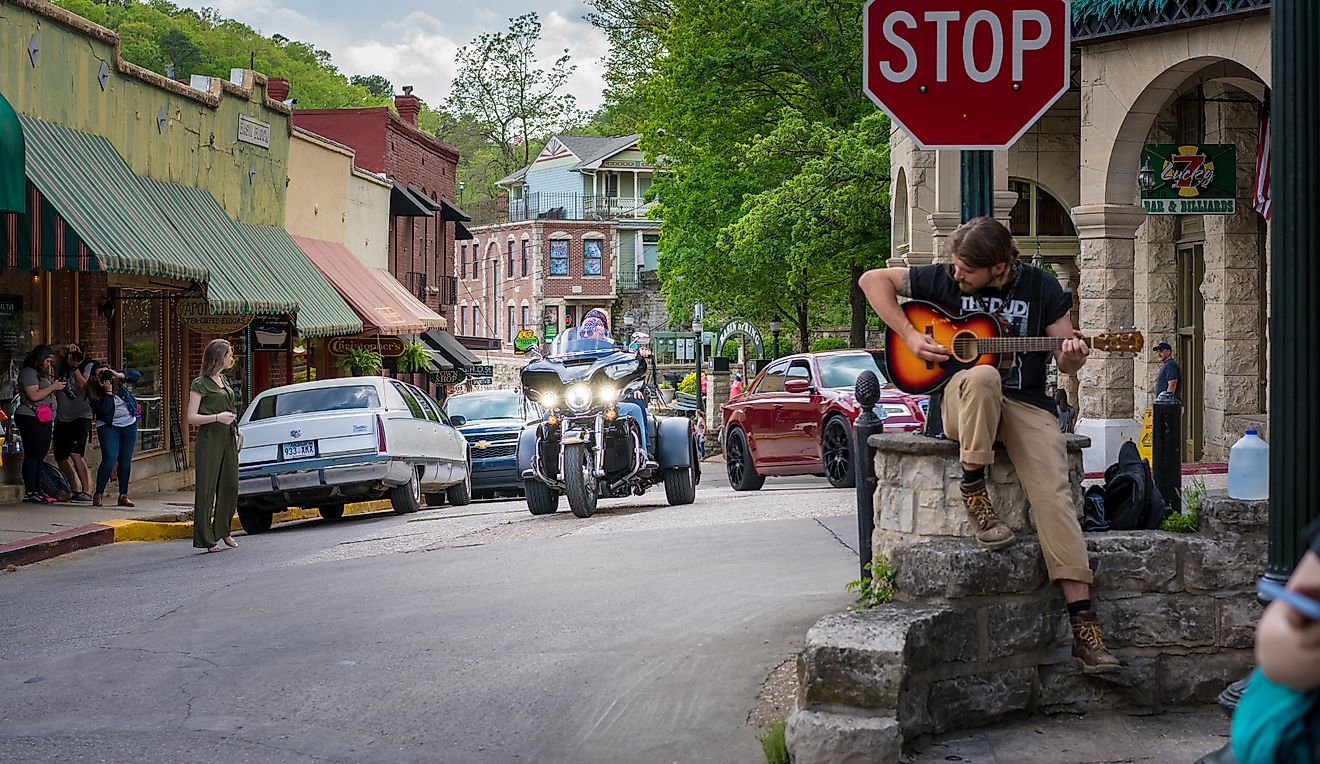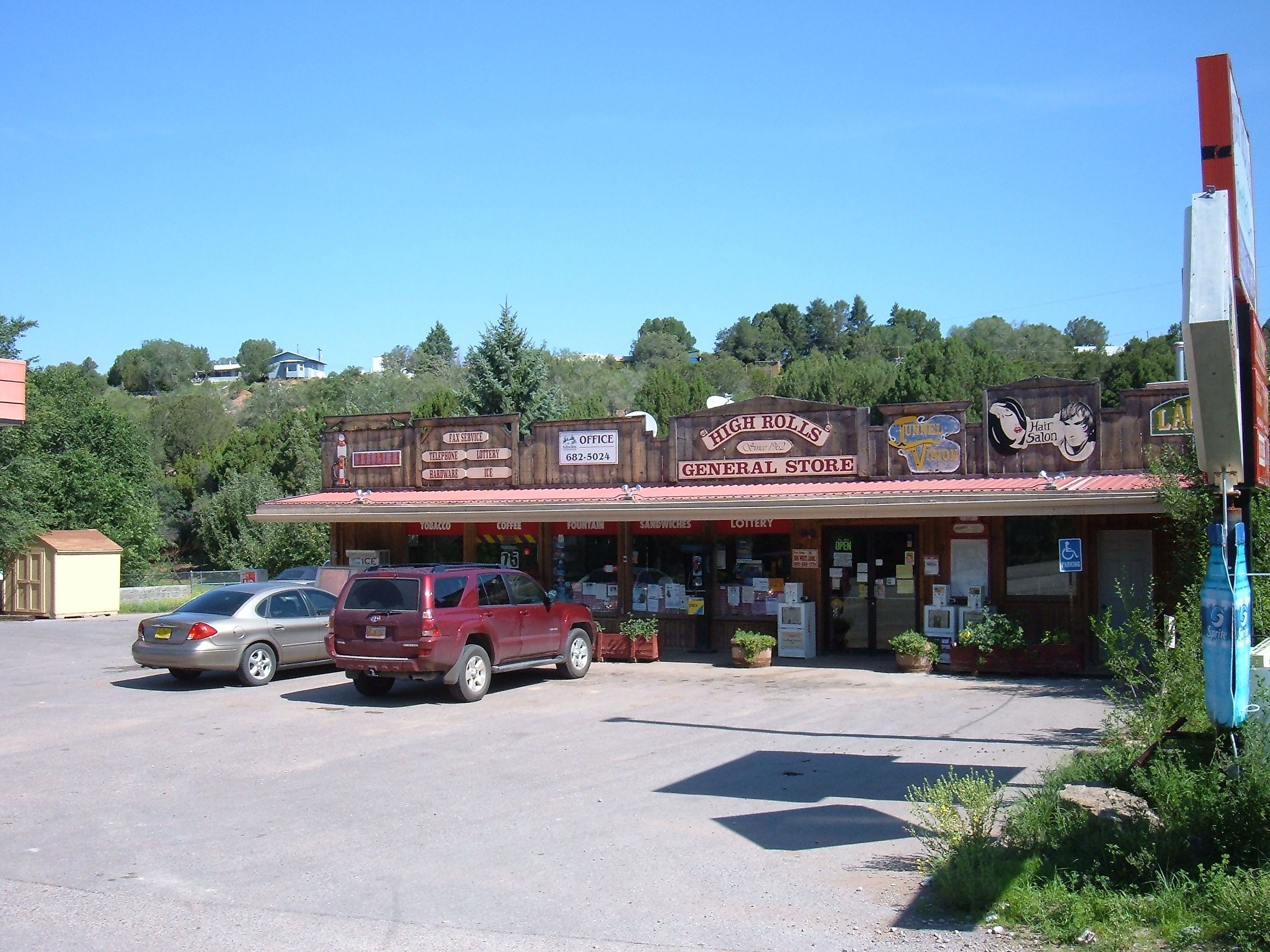
8 Old-Timey General Stores In New Mexico
With a history stretching back thousands of years, New Mexico officially became a U.S. territory in 1850 and became a state in 1912. Over time, a unique blend of Native, Hispanic, and Anglo influences helped shape the area’s traditions, towns, and trade, reflected in the old-timey general stores that once dotted the landscape. During the late 1800s and early 1900s mining boom, these stores sprang up across small towns, blending with post offices, one-stop supply centers for everything from dry goods to farm tools, and makeshift social gathering spots. Today, many of these old-timey general stores in New Mexico have been preserved for their historic charm or restored to their former general store glory.
J.P Holland General Store
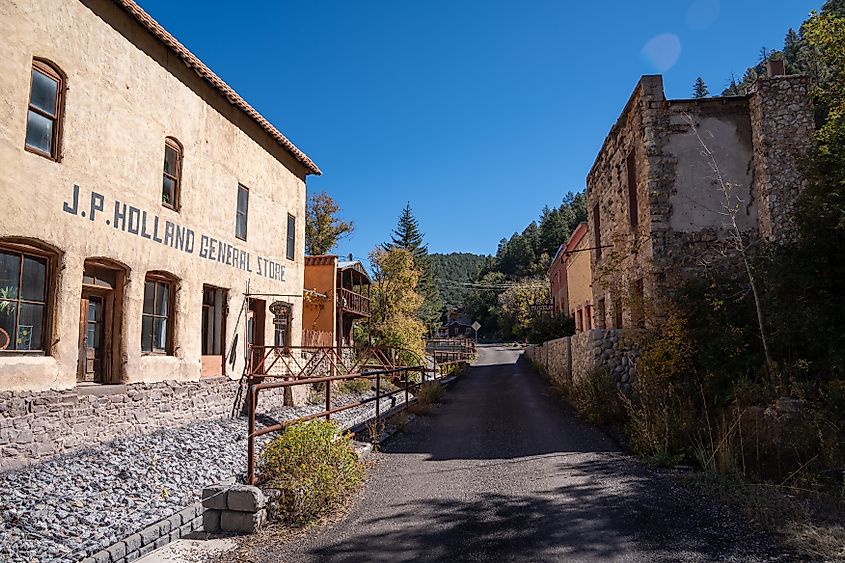
Fans of ghost towns and off-the-beaten-path travel destinations will discover much to love about the former booming mining town of Mogollon. The town was founded in 1876 after gold was discovered in the nearby Gila Mountains in the Gila National Forest. A local miner built the first cabin in 1889, then a jail, a post office, and finally a school when more residents settled there. In its heyday, the town boasted a population of around 6,000 residents and was home to five saloons, two restaurants, a handful of brothels, and four general stores.
One of those general stores, circa 1885, was a 5,000-square-foot, two-story building purchased by a barber from Philadelphia named J.P. Holland, who ran it as a barbershop and general store until 1948. In 1980, the building was renovated, repurposed, and restored as the Silver Creek Inn. The name J.P. Holland still adorns the exterior adobe walls of the Silver Creek Inn, a seasonal retreat center for groups of up to 8 adults. From May through October, the inn, the Purple Onion Cafe, Mogollon Woodworks, and a handful of other stores are open for visiting ghost hunters. About fifteen people live year-round in Mogollon and are caretakers of the town and its mining past.
Coury Mercantile Company and Wm. Hindi Store
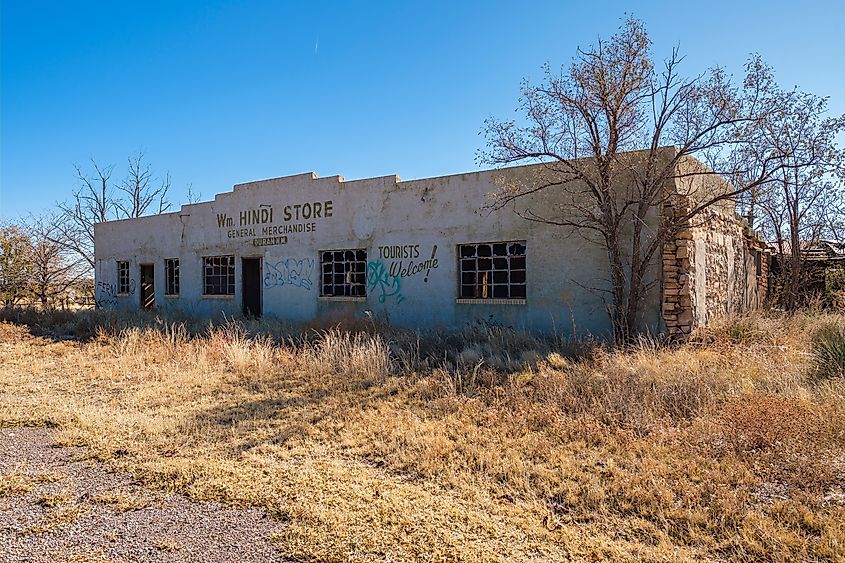
Duran was founded as a railroad stop for the maintenance of locomotives rolling between the small towns of El Paso and Santa Rosa. The tiny community has a rich history when it comes to old-timey general stores, including an infamous robbery at one of its stores, resulting in the last legal hanging in the state in 1922. Still standing, the tan-colored sandstone building was a general store and hotel called the Coury Mercantile Company. During a botched robbery in September 1921, owner Anton Coury was shot and killed, and his killer was later found and hanged at the gallows for his crime—the 75th and last person in New Mexico.
Another general store in Duran is the Wm. Hindi Store, which was built in 1908 and originally housed the Duran Mercantile Company until William Hindi purchased it. Although the Wm. Hindi Store has long since been abandoned, but the eye-catching building with the hand-painted words “Tourists Welcome” still ironically attracts tourists to Duran. Often referred to as a ghost town, Duran’s population was twenty-two residents in early 2025, and it is the perfect afternoon trip for history, architecture, and photography buffs.
Craig & Keele General Store
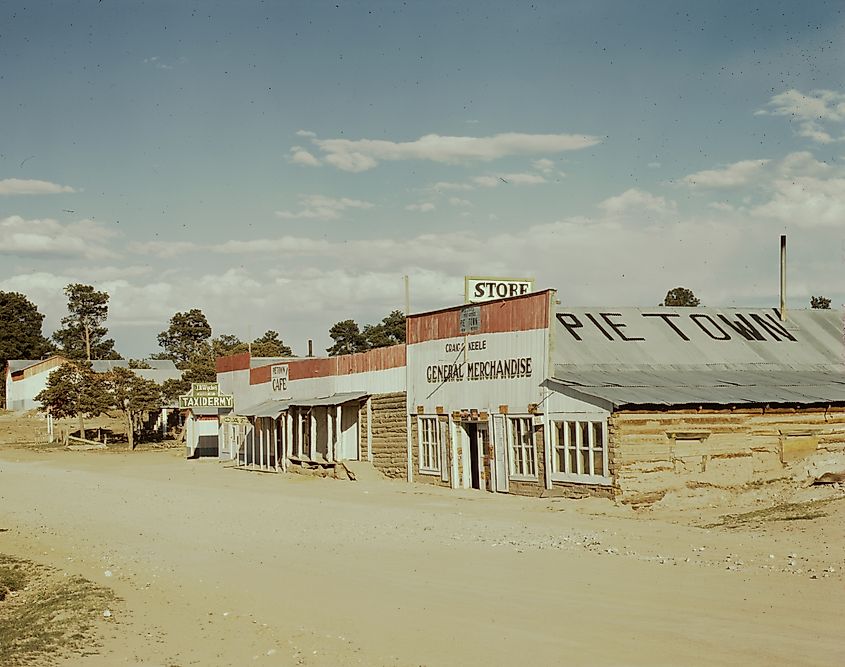
The only way to visit Pie Town is via U.S. 60, the “Coast-to-Coast” highway, which attracts pie enthusiasts from far and wide to its annual Pie Festival on the second Saturday of every September. This September 13, 2025, Pie Town will celebrate the 43rd anniversary of its pie celebration with small-town charm, community spirit, and a pie-eating contest. Visitors can try a slice of the town’s namesake treat at Pie-O-Neer, the Gathering Place II, and the Pie Town Cafe at any other time of year.
The history of the small community of 176 residents is as American as apple pie itself, whose original settlers were primarily made up of families blown into town by the Dust Bowls of Texas and Oklahoma. One of these settlers was Joe Keele, who moved to Pie Town in 1933. He partnered with another settler, Harmon Craig, and opened the Craig & Keele General Store. In 1940, the American photographer Russell Lee was hired by the Farm Security Administration (FSA) to capture small-town rural America during the Great Depression and World War II. His famous photograph of the Craig & Keele General Store and about 600 other images of Pie Town are preserved in the archives of the Library of Congress.
Old Cuchillo Bar and Store
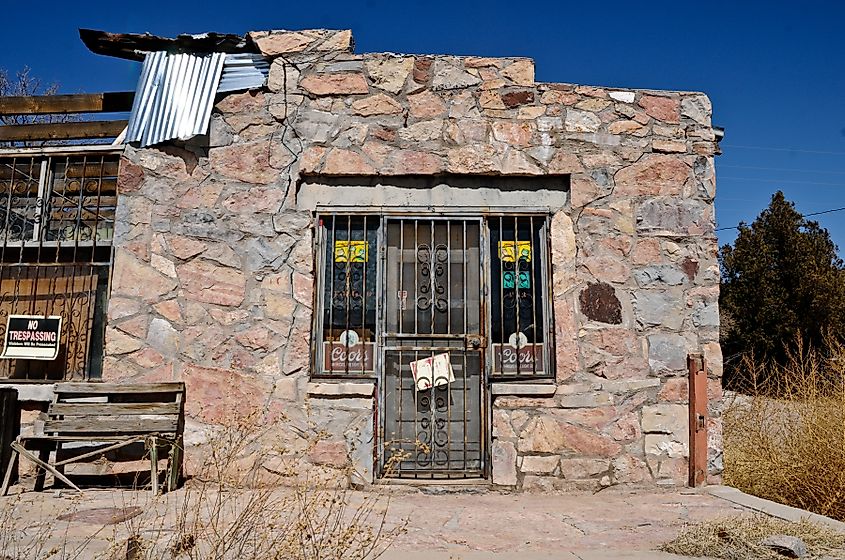
Cuchillo is a designated “Traditional Historic Community” fifteen miles northwest of Truth or Consequences. Thanks to the rush for silver and gold, Cuchillo became a hub for travel and trade in the late 1800s, but by 1896, the United States government demonetized silver, and many former boom towns went bust, including Cuchillo. A handful of people still live in Cuchillo, including the Gants, who run a family-owned pecan orchard and adjacent shop called Gants Goodies. A few old buildings also remain, including the well-preserved, historic San Jose Catholic Church, built in 1907, and the Old Cuchillo Bar and Store, which was built in the 1850s. In 2000, the store was partially destroyed in an electrical fire, and eventually, the bar and store were closed for good. Cuchillo is still on the radar of ghost hunters and paranormal enthusiasts, as the small town and the Old Cuchillo Bar and Store are rumored to be haunted.
Arroyo Seco Mercantile

The village of Arroyo Seco, nine miles outside Taos, is a 200-year-old community steeped in rich history and culture, sitting at the base of the Sangre de Cristo Mountains. Arroyo Seco is a top destination for Taos foodies, who regularly make the drive to enjoy an elevated dining experience at ACEQ Restaurant, spend time at local favorite Abe's Cantina Y Cocina, or splurge on homemade ice cream at Taos Cow. The town is also a haven for artists, potters, sculptors, and jewelers who sell their artwork at local stores, including Claireworks, Wannamaker Pottery, and the Arroyo Seco Mercantile. Constructed in 1895, the Arroyo Seco Mercantile was the local general store until the mid-1950s. Although currency was accepted, shoppers often bartered for goods with hay, farm produce, and wool.
After a few incarnations as other businesses, the historic building housing the original Arroyo Seco Mercantile reopened as a general store in its original building in 1998. Today, the new Arroyo Seco Mercantile general store sells everything from household items like lightbulbs, rakes, and screws to religious items, turquoise jewelry, and vintage treasures.
High Rolls General Store

High Rolls is one of two small communities—Mountain Park being the other—tucked halfway up the winding road to the popular mountain getaway of Cloudcroft in the Lincoln National Forest. High in the scenic Sacramento Mountains, High Rolls is a peaceful stop on the climb, full of family-run cherry and apple orchards whose festivals draw thousands of visitors annually. High Rolls is becoming increasingly popular with people looking for a slower pace of life and a tight-knit community, attracting newly transplanted residents from big cities in Texas, like Austin and Dallas. One of those transplants is Guy Ross, the owner of the High Rolls General Store, captain of the High Rolls Volunteer Fire Department, and unofficial mayor of the community.
Although the High Rolls General Store sells modern-day conveniences, it retains an old-timey charm, like several businesses in the two communities, including the cozy Cadwallader Mountain Farms U-Pick. The Old Apple Barn is another nostalgic nod to simpler times, a former apple processing barn turned into a quirky tourist emporium selling novelty gifts, homemade pies, and fudge.
Winston General Store
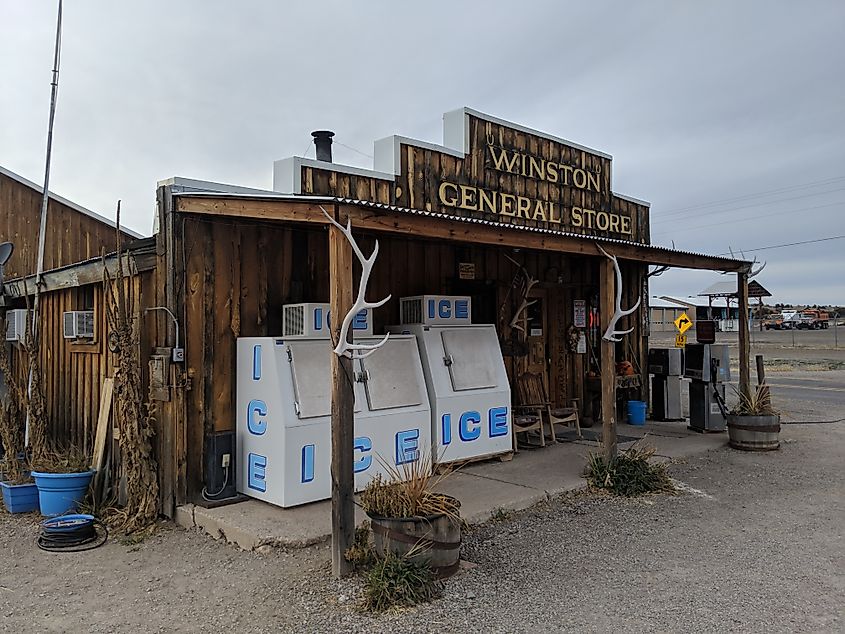
Winston is a historic mining town, established in 1881, in Sierra County, smack dab in the heart of New Mexico’s unofficial community of ghost towns. Between 1882 and 1886, a miner named Frank H. Winston moved from Wisconsin to the town known as Fairview, lured by the promise of wealth. After the silver panic of the mid-1890s, the miner-turned-businessman opened the Fairview Cattle Company, the Fairview Garage, and the Frank Winston Company General Merchandise, today known as an iconic old-timey general store called the Winston General Store.
With the unmistakable feel of a place that remembers its wild past, antlers hang everywhere, and a huge taxidermied deer head in the middle of the general store. Open 7 days a week, the store sells ice, groceries, and hot coffee and offers travelers sandwiches to go and hot showers. During his life, Winston was rumored to be a very generous man, often extending credit to customers during hard times. Frank H. Winston died in 1929, after which the town was renamed in his honor.
Old Boarding House Mercantile
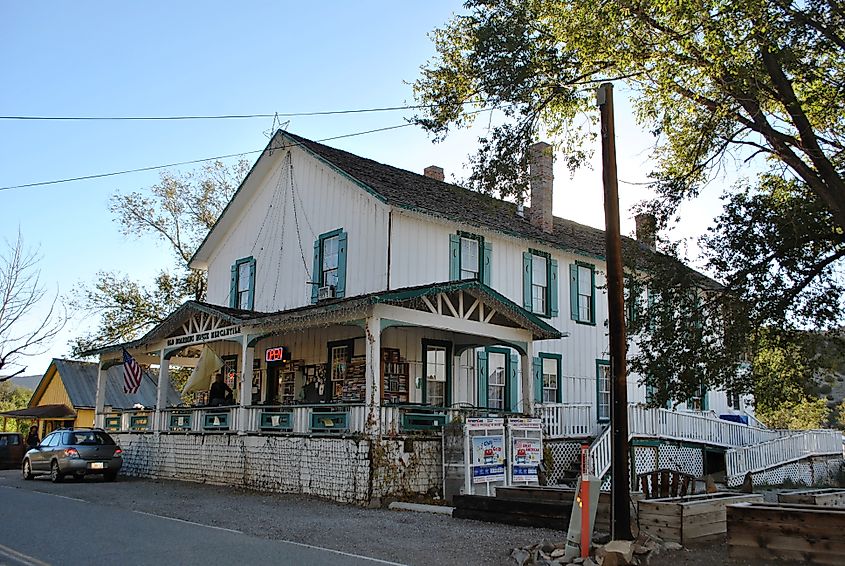
Madrid is a former coal mining boomtown along the scenic Turquoise Trail between the capital city of Santa Fe and Albuquerque. Once bustling with miners and families, the town saw a steep decline after World War II, when the demand for coal dried up, leaving Madrid on the verge of becoming yet another New Mexico ghost town. In the 1970s, a wave of artists, dreamers, and free spirits rediscovered the charm of the place, sparking a creative renaissance that turned Madrid into a quirky and colorful community.
Today, the town is a popular haven catering to traveling artists and creatives with art galleries, one-of-a-kind boutiques, and funky restaurants, but without forgetting its storied coal mining past. For history buffs, visiting the Madrid Old Coal Town Museum is a must, followed by drinks at the Mine Shaft Tavern. Housed in a former brothel, the Old Boarding House Mercantile gives visitors a closer look at Madrid’s past with its historic architecture and vintage ambiance. The old-timey store sells a curated selection of groceries, snacks, and unique gifts.
Echoes of Enterprise: The Legacy of New Mexico's General Stores4o
There’s no shortage of quirky, historic small towns across New Mexico where old-timey general stores once served as lifelines and gathering places and, in some cases, still do. From the ghostly mining remnants of Mogollon and Winston to the artistic revival of Madrid and Pie Town, each town has preserved pieces of its past through its general stores, many dating back to the late 1800s and early 1900s. Providing more than just foodstuffs and everyday goods, some of these general stores are legendary with tales of infamous robberies, barter systems, and community resilience. From the legendary robbery at Duran’s Coury Mercantile, which led to the last legal hanging in New Mexico, to the barter-filled days of Cuchillo's historic store, these stores played pivotal roles in shaping the character and spirit of their towns. Whether transformed into cafes and inns or still selling hardware and hot coffee, these general stores offer a glimpse into New Mexico’s history and enduring small-town spirit.
